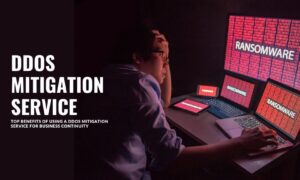There are several hazards that companies in the modern, fast-paced digital world run the danger of endangering their assets and operations. Set up of robust risk management regulations is necessary to handle a broad spectrum of risks, including cybercrime and natural calamities. More and more possibilities to assist companies reduce their risks are becoming available as technology develops. We are going to discuss some crucial digital tools that companies need to protect their money.
It takes competent risk management to safeguard corporate assets in a world where risks are becoming more complex. Using cutting edge technology such as threat intelligence platforms, DLP solutions, and SIEM systems, businesses can identify and reduce operational risks. Better security in general requires identity and access management (IAM) systems, risk management platforms, and technologies for business stability and crisis recovery. Companies that use these technological tools and exercise caution with risks can safeguard their assets and prosper in the digital era.
Learning Security
Your staff can learn from a security awareness training program how to decrease the possibility of errors and maintain your company safe online, enhancing their understanding of business communication. Staff members that take these courses learn concepts and abilities that enable them to identify and handle security threats, including hacking, social engineering, and good password management. By routinely providing security awareness training, businesses can reduce the possibility of internal attacks and foster a culture that values security.
Threat Intelligence Systems
Threat intelligence systems must be implemented before prospective threats to an organization can be identified and investigated. Cybernews, forums, and social media services provide a large portion of the real-time information these websites receive about new threats. Utilising hazard data, businesses can anticipate risks and take precautions to safeguard their assets.
Security Information and Event Management (SIEM) Systems
Risk management greatly benefits from SIEM systems since they monitor and investigate all IT events that may be related to security. From PCs, network devices, and applications, among other sources, they obtain log and event data. They have such complete vision of and ability to eliminate hazards. SIEM systems combine many data sources to enable businesses identify potential security gaps and take prompt action to reduce risks.
Identity and Access Management (IAM) Solutions
Implement IAM solutions to oversee office management, safeguard private data and monitor who has access to digital resources. Businesses can monitor what employees are doing at all times, set restricted access restrictions, and safely identify them. Using multi-factor authentication and role-based access control, two IAM best practices, businesses can reduce their vulnerability to insider threats and unwanted access.
Data Loss Prevention (DLP) Solutions
You need methods to prevent data loss in order to protect private information from theft, leaks, or unwanted access. Complicated mathematics is used by these systems to monitor data flow inside an organization and ensure that regulations are followed to protect data. With DLP solutions that label and encrypt sensitive data, businesses can protect their most valuable assets and comply with regulations.
Disaster Recovery and Business Continuity Tools
So that operations do not stop during a disaster or system failure, disaster recovery and business continuity must be made to function. Important data and programs can be easily backed up and copied with the help of these technologies, which enables companies to resume operations as soon as something negative. Businesses can lessen the effects of unforeseen events and reduce interruptions by implementing cloud-based technology and creating effective disaster recovery plans.
Installing the Infrastructure to Handle Vulnerabilities
Finding and sealing security gaps in their IT infrastructure is made possible for businesses by vulnerability management solutions. These sites display potential bugs in programs, systems, and networks along with an estimate of the amount of work required to fix each. Businesses who patch vulnerabilities themselves could increase overall system security and reduce the likelihood that malicious individuals will exploit them.
Applications of Endpoint Security
In order to protect themselves from internet dangers, personal computers, terminals, and cell phones require endpoint security solutions. Through real-time monitoring of your devices and adherence to security guidelines, these solutions shield you from ransomware, malware, and other dangerous programs. Businesses can reduce the possibility of data breaches and secure their IT systems by protecting their devices.
Intervention Programs
Incident response systems are a must for businesses in order to plan and arrange how to address security concerns. These systems provide standardized methods of problem-solving and illustrate their appearance so that they may be avoided or minimized. The response times are reduced as a result, and security personnel collaborate more effectively. Through incident response systems, businesses can reduce the impact of security incidents and ensure that they are handled promptly, so reducing future risks.
Encryption Tools
Whether data is being transmitted or stored, encryption software is required to maintain its security and privacy. Safely encrypted private data cannot be viewed by those without access to these apps. By preventing access to information by those who should not be able to read it, encryption of data on computers, databases, and mobile devices ensures that GDPR and HIPAA regulations are followed.
Cloud Security Solutions
Data and apps kept in clouds like AWS, Azure, and Google Cloud Platform must be protected by cloud security measures. Encryption, risk monitoring, and identity management are a few security measures that guard you against cloud-based assaults. Firms can benefit from the scalable and flexible cloud computing. By implementing robust cloud security measures, they can reduce the possibility of data leaks and unwanted access, though.
Rules-following Resources
Firms that want to ensure they adhere to industry standards like PCI DSS, SOC 2, and ISO 27001* and learn about the complex regulations that control them use regulatory compliance software. By automating compliance chores, producing audit reports, and continuously monitoring, these systems ensure that rules are followed. Businesses who use regulatory compliance solutions can be able to steer clear of the large fines and harm to their brand that could result from breaking the law.
Network Access Control (NAC) Solutions
Solution for network access control are required to ensure that security regulations are followed and that only authorized users of corporate networks can access them. These solutions guarantee that just authorized and known devices can access network resources by verifying and authorizing devices. Network-based threats including viruses and hackers may be less likely to enter a company that employs NAC solutions.
Resources to Aid in Threat Identification
Threat hunting solutions provide security personnel the means to actively seek out and identify concealed threats within an organization’s IT infrastructure. These systems scan for indications of invasion and odd behavior that could elude standard security measures using sophisticated machine learning algorithms and analytics. Through routine threat detection exercises, businesses can keep one step ahead of hackers and eliminate new threats before they become serious security concerns.
Security Orchestration, Automation, and Response (SOAR) Platforms
So that they can react fast to threats and security issues, businesses need SOAR systems to automate and speed up security processes. Through their integration with current security technology and tools, these solutions are intended to automate repetitive chores, manage incident response protocols, and facilitate collaboration among security experts. Through faster response times to security incidents, higher worker productivity, and ease of operation, SOAR solutions may benefit companies.
Summary
Threats of today are always evolving, thus companies need to protect their assets with a wide range of technology. Every technology can reduce the possible risks and help safeguard the IT infrastructure of an organization, including incident response platforms and device security solutions. Companies who make proactive cybersecurity investments and invest in new technologies can keep their assets safe from theft and stay ahead of new risks.



































